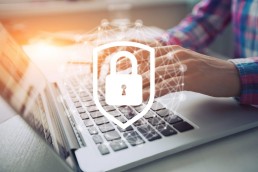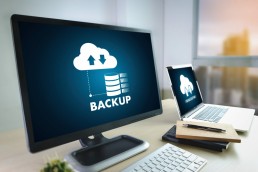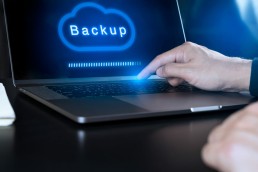Kaspersky Virus Protection: How to enter the activation code
Kaspersky antivirus: How to enter the activation code
The horror scenario for every computer user: You turn on your PC in the morning and nothing happens! Or – even worse – a message appears saying that the computer has been hacked and that you can only get your data back by paying a ransom. These are only two of the countless possibilities that Trojan viruses and other malware can trigger. Kaspersky virus protection, which surrounds the computer like the walls of a medieval castle, can help.
What is Kaspersky virus protection?
Basically, every computer has vulnerabilities through which hackers can introduce their viruses. Just being connected to the Internet can be a vulnerability without adequate protection. But even malware that is either loaded via the network or fed onto the hard disk via data carriers can destroy all data at once or render parts of the computer unusable. For this reason, it is imperative that every PC user has up-to-date software for Virus protection software installed. Kaspersky virus protection has proven to be the leading programme in this area. The software successfully fends off attacks by viruses, malware and Internet dangers such as dangerous websites and phishing attempts.
This is what the software contains:
- Virus protection: In addition to a virus scanner, the programme also offers real-time protection that detects and removes viruses and Trojans before they can penetrate the computer's system.
- Firewall: The firewall included in the version Kaspersky Total Security 2021 version analyses data traffic and protects IT systems securely against attacks or unauthorised access
- VPN: Kaspersky Total Security 2021 also includes a VPN that allows you to surf the internet anonymously, for example for protection when using an unsecured network.
- Special features: The virus protection programme from Kaspersky also scores with extras such as parental control, vulnerability scanner, spam filter, update assistant, game mode, filter for search results, protection for online banking, password manager and a filter for advertising.

Virus protection with Kaspersky requires an activation code
In order to use Kaspersky’s virus protection, you must first enter a 20-digit activation code. Two methods are available for this:
Enter activation code during installation
- The first thing to do is to check that the PC has the correct date. Only then should you enter the code in the window that opens during the installation.
- After entering the code in the corresponding fields, click on the button "Activate".
- If a message appears stating that the software has been successfully activated, click the "Finish" button.
- The Kaspersky Anti-Virus Licensing window appears. Details on the activation of the software are displayed here, which you can follow step by step.
Activation after installation
- The first step is to launch the Kaspersky Anti-Virus application.
- Then select the option "Enter activation code" in the lower right area.
- The "Licence management" window appears, here you must select the "Activate programme" item.
- The Kaspersky Anti-Virus activation window opens. To activate, proceed as described above.

Avast Premium Security 2020
The second antivirus software we would like to introduce today is Avast Premium Security 2020. The paid version includes all the features you might already be used to with the free version, plus those of Avast Internet Security. This includes:
- Antispam filter: It detects unwanted emails and denies them access to the mail programme.
- Firewall: With this software, protection can be controlled directly from the user interface.
- Automatic programme updater: which always uses the latest version.
- Real-time protection: With it, one can monitor all activities of the computer such as running programmes and files in real time.
- FileRep and WebRep: These features check files and websites against databases. If something is not trustworthy, the software informs you immediately.
- Virus Container: This is an isolated area on the hard disk where suspicious or dangerous files are safely stored.
Header Image: © Shinonome Production, stock.adobe.com
EaseUs Todo Backup: How to back up your files
EaseUs Todo Backup: How to secure your files
Suddenly the desktop goes dark, the PC won’t boot up. Or you overwrite an important document and don’t rename it. Or a virus eats through the most important data and destroys it. Or … the possibilities of losing important files are manifold. How are you supposed to restore them if no regular data backup was made beforehand? Often this does not work at all – and this can have fatal consequences. The good advice: regularly make a data backup with a backup on your PC or, even better, with top software such as EaseUs Todo Backup for example.
This is why data is lost
Starting with the Windows 7 operating system, the computer automatically creates a data backup on a regular basis, thus acting almost like a kind of automatic backup. Nevertheless, it can quickly happen that important files are lost. The most common reasons for this are:
- Technical problems: Older hard disk drives (HDD) in particular wear out over time. The danger is no longer so acute with modern SSD hard disks, but data loss can occur there too. For example, due to demagnetisation or sudden power interruption. According to the manufacturer, hard disks generally have a maximum lifespan of 10 years. Without regular data backups, it is difficult to restore sensitive files afterwards. Suitable data backup software such as EaseUs Todo Backup is therefore essential.
- Human error: Shocks, for example if the laptop or external hard drive is dropped, but also liquids that penetrate the inside of the computer - such as a spilled coffee - quickly lead to data loss. It is not uncommon for files to be accidentally deleted, overwritten and incorrectly formatted. Another source of error is the accidental download of malware such as viruses or ransomware.
- Force majeure: No one is protected from unforeseeable events such as water damage, fire or earthquakes. The risk of suffering a data loss as a result can be reduced by regular backups and a data backup using the cloud or EaseUs Todo Backup.
- Theft: In fact, it is not at all uncommon, especially in professional life, for hackers to steal data. A good firewall, careful handling of files and regular data backups help to prevent this.

Backing up files with Backup PC and EaseUs Todo Backup
Computers running the Windows 7 operating system or higher automatically create a backup as Backup PC . Another option is to regularly back up files by using a special Backup PC is used like a kind of external hard drive. All „work computers“ are then connected to this computer and the data backup takes place automatically.
EaseUs Todo Backup Instructions
Regular data backup is much easier and more convenient with EaseUs Todo Backup.
This is how it is done:
- First, Todo Backup is downloaded as an installation file from the manufacturer's website.
- Then you select the hard disk that you want to back up.
- Next, you specify the storage location. You can choose the default function "hard disk" or select a storage location that is not directly on the PC, such as a USB stick or an external hard disk. Alternatively, a cloud storage can be specified as the storage location.
- When the programme is started, EaseUs Todo Backup offers the following options:
- Drive/Partition Backup
- File backup
- System backup
- Smart-Backup
- Clonesn
- System clone
- If you want to create a simple backup copy of the Windows operating system with all its files, just click on "System backup". The software then automatically selects the correct partition.
- "Smart-Backup", on the other hand, regularly backs up the data that has been changed and newly added at predefined times. For example, always on Fridays after work at 6 pm.
- A time when the PC is not in use is ideal for the backup, as the process can take some time. Depending on the selection made beforehand, the PC either shuts down after the backup or switches to energy-saving mode.
- It is advisable to make another selection beforehand. Depending on what is required, the functions "full backup", "incremental" and "differential backup " are available.
Header image: © jirsak, stock.adobe.com
Instructions: Create a backup - now work safely at home!
Instructions: Create a backup - now work safely at home!
Especially in times of the home office, purely private data such as pictures, e-mails or music collections are joined by business data, which is indispensable for a smooth, optimised workflow. And what if there is a crash? Then everyone who does at least part of their job at home will be in trouble! So it’s high time for a professional backup – here’s how!
Definition: Data backup
The hard disk of a computer stores all data. But also the browser favourites and especially the access data to the computer are stored here. In the course of time, a veritable data library is created at the heart of the computer. Practical on the one hand – but risky on the other. Unfortunately, the hard disk also has a limited lifespan. Malfunctions and defects can occur, data can be lost or the computer can simply no longer be started.

Caution: Danger
Another danger to sensitive data is malware, such as a computer virus or ransomware, which will not release data until a ransomis paid. Due to so many possibilities of data loss, it is essential to make a regular backup on two independently operating storage media. How often this data backup should take place depends, among other things, on the frequency with which data is changed. In the home office, with its constant workflow, a daily data backup is recommended. With a backup, a copy of all data is made manually or by means of suitable software. This is done with the help of an external storage medium, such as an external hard drive. From there, a so-called data recovery is possible at any time.
Backup methods
Basically, there are several methods available for backing up data – and each has its advantages and disadvantages.
Manual backup:
This option is inexpensive but requires a bit of discipline. In any case, it should be done every time data is changed or new data is added. Tip: With a tightly timed, regular schedule, it is often easier to maintain this discipline . Procedure: First, a data carrier (external hard drive) with sufficient storage volume is connected to the computer. Then copy the data from the source data carrier (the computer’s hard disk) to this external hard disk. Disadvantage: As a rule, the computer’s system data cannot be backed up with the manual backup.
Semi-automatic backup:
Here, software is used that even backs up the entire system, depending on the version. Another option is to back up specific files or folder structures. Procedure: Again, an external data carrier (hard disk or DVD) is connected to the computer. Alternatively, the data can also be saved under a network address (cloud). For the backup of the data, a time must be specified at which the programme is to carry out the backup. Tip: Do not specify the time during normal working hours, as the data backup may require a high level of computer performance.

Fully automatic data backup:
For this, appropriate backup software is set up only once. The programme then creates backups independently in the specified period and according to the desired frequency. Procedure: Connect an external data carrier as usual, then install the software. Now enter when and how often the programme should make the backups. In most cases, you can also set up certain types of backups. Advantage: With the fully automatic data backup, the software does everything by itself, including the system backup.
Suitable backup programmes
AOMEI Backupper Professional
AOMEI Backupper Professional enables backups of hard disks, individual folders or files as well as the complete system. The programme is time or event controlled and can even delete outdated backup folders on its own.
Stellar Photo Recovery
With Stellar Photo Recovery you can recover damaged, deleted or lost photos as well as music and video files. The programme can recover data on internal as well as external drives, CDs, DVDs or memory cards.
Header image: © onephoto, stock.adobe.com
Nie wieder Daten verlieren – Backups erstellen wie die Profis
Nie wieder Daten verlieren – Backups erstellen wie die Profis
Kaum ein Job, der heute ohne Computer auskommt. Das heißt, dass eine Unmenge an Daten nicht nur durch die Leitungen geschickt werden, sondern auch auf den Festplatten der Computer liegen. Und was, wenn der Rechner mal kaputt geht? Sind dann all diese wichtigen und zum Teil hochsensiblen Daten für immer verloren? Nicht, wenn die Daten auf geeignete Art gesichert wurden. Genau aus diesem Grund ist ein regelmäßiges Backup so enorm wichtig! Wir zeigen, worauf es dabei ankommt.
Backup mit der bewährten 3-2-1-Regel
Kundendaten, aber auch Fotos, Formulare, Passwörter und Programme sind weg, wenn der PC weg ist. Das ist nicht nur ärgerlich, sondern auch gefährlich. Denn mit solchen Daten lässt sich auch allerlei ungesetzlicher Unfug anstellen.
Sind die Daten erst mal in die falschen Hände geraten, ist es unumgänglich, sie vor weiterem Zugriff zu schützen. Aber wie soll das funktionieren, wenn man beispielsweise seine Passwörter nicht kennt oder den Lizenzschlüssel für dieses oder jenes Programm nicht mehr findet?
Hier hilft die von Sicherheitsexperten aufgestellte 3-2-1-Regel:
- Alle Daten sollten 3x vorhanden sein: Auf dem PC (oder Notebook etc.) sowie auf zwei weiteren Backup-Medien.
- Die Backups sollten auf 2 verschiedenen modernen Datenträgern hinterlegt sein. Beispielsweise in einer geeigneten Cloud UND auf einer externen Festplatte.
- Eines dieser Speichermedien sollte grundsätzlich verschlüsselt außer Haus aufbewahrt werden. Dadurch geht auch bei einem Einbruchsdiebstahl nichts verloren.

Recovery Tools und mehr: wichtige Backup-Programme
Es gibt viele gute Tools, mit denen Daten gesichert, übertragen und sogar wiederhergestellt werden können. Dazu gehören unter anderem:
- Vor allem für KMUs (kleine und mittelständische Unternehmen) hat sich der Genie Backup Manager bewährt. Er eignet sich sowohl zu Datensicherung als auch zur Wiederherstellung verloren gegangener Daten.
- Der EaseUS Data Recovery Wizard ist in der Lage, gelöschte Daten wiederherzustellen. Dabei ist es gleich, ob sie versehentlich gelöscht wurden oder einem Hardwarefehler oder gar einem Virus zum Opfer gefallen sind. Das Tool ist kompatibel zu FAT-Dateisystemen, wodurch auch Dateien von Speicherkarten oder USB-Sticks gerettet und repariert werden können.
- Mit dem EaseUS Partition Recovery ist es sogar möglich, vollständige Festplatten-Partitionen zu retten.
Wer mit mehreren Computern arbeitet, ist mit der Software PCmover bestens bedient. Das Programm überträgt Programme, Einstellungen und Dateien von einem Rechner auf den anderen, ohne dass es dabei zum Verlust wichtiger Systemdateien kommt. Auch Sicherheits- und Registrierungseinstellungen selbst von mehreren Nutzern bleiben erhalten.
Welche Datenträger sind für ein Profi-Backup geeignet?
Die Methode zur Datensicherung hängt davon ab, um wie viele Daten es sich handelt, wie lange diese vorgehalten werden sollen und in welchen Intervallen das Backup stattfinden soll. CD’s und DVD’s oder Blu-Ray’s verfügen nur über ein begrenztes Speichervolumen und haben nur eine begrenzte Lebensdauer. Eine externe Festplatte eignet sich zum Backup wesentlich besser. Noch geeigneter ist eine RDX Wechselfestplatte, die während des PC-Betriebs automatisch ein Backup erstellt. In Sachen Backup etabliert sich die Datensicherung über das Netzwerk auf NAS sowie über eine Cloud oder einen FTP-Server immer mehr.
Header-Bild: © ST22Studio, stock.adobe.com




